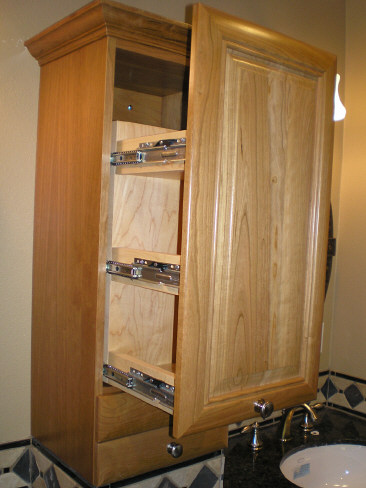Defining Quarter-Sawn and Rift-Sawn
There are both formal and informal definitions for "quarter-sawn" lumber. Here, cabinetmakers and the Wood Doctor discuss the fine points. July 5, 2006
Question
I need to make some cabinets, and the customer wants quarter-sawn oak. My supplier doesn't carry the q-sawn in a 1/2" only in rift. Can someone please tell me what the difference in look is between the two? Do you think I could get away with using rift for the whole job if I am using q-sawn solid for the doors, drawers, and panels?
Forum Responses
(Cabinetmaking Forum)
From contributor S:
The biggest difference in appearance is the flecks or rays that are more prevalent in quarter sawn. Rift cut gives a better yield, so it is less expensive and more available.
From contributor J:
Rift sawn is used in square legs so the grain looks the same from all sides. Otherwise one side would be flat sawn, and the other quarter sawn.
From the original questioner:
Thanks. I was worried about the rays and flecks. These will be used as backs and in the uppers with glass doors, no lighting. So I think I will be safe. My distributor has QS ply at a cheaper price than rift cut. I didn't ask about pricing for rift cut for my solid wood.
From contributor J:
I read somewhere that lumber graders use the following standard for deciding what's qs and what's rift:
- Growth rings 90 to 60 degrees from the face of the board is qs.
- Growth rings 60 to 30 degrees from the face is rift.
Does anybody know if that's true? It sounds about right.
From contributor T:
The customer is always right. If they want q-sawn oak, why would you give them something else? If you aren't going to give them that, why not just use poplar and paint it? I know this is extreme, but you are doing the same thing by not giving them what they want! Use the q-sawn oak. Plane it down and charge them for it.
From the original questioner:
The 1/2" is for the inside backs of the cabinets. I was planning on making all of the exposed panels, drawer fronts and doors from solid QS. Having the rift on the inside of the cabinet is not going to matter to him that much. He will know about it before I start - I wouldn't try to sneak it in. But I am not going to make my backs out of solid QS just because I can only get the 1/2" rift ply. I'd rather not accept the job.
From contributor T:
Gotcha - I misunderstood that part. I would have to agree about the rift sawn or even plain sawn (if there are no glass panels) for the backs. It certainly makes sense from a financial standpoint as well.
From Professor Gene Wengert, forum technical advisor:
I generally use the term q-sawn to mean 75 to 90 degrees, and rift from 45 to 75 degrees. However, the NHLA uses the more functional definition and that is that if the figure shows well, it is q-sawn. (See the rule book for the exact definition.) Many people consider that lumber is either q-sawn or flatsawn. In other words, the term q-sawn actually has two meanings at times.
From contributor A:
If your ply supplier has 3/4" QTR, use that for the back. Do not use rift cut for the back... It's really the only part of the inside of the cabinet you see. If you had to do solid, consider v-board. It's quite attractive in QTR white oak.
From Professor Gene Wengert, forum technical advisor:
If someone says they want quartersawn oak, they could mean that they do not want flatsawn, but they may be okay with riftsawn. The definitions are not clear. So, it is best to find out what the customer is really looking for when they state "quartersawn." If they do not know for certain, then fall back on the NHLA rules, which are very functional in this matter.
